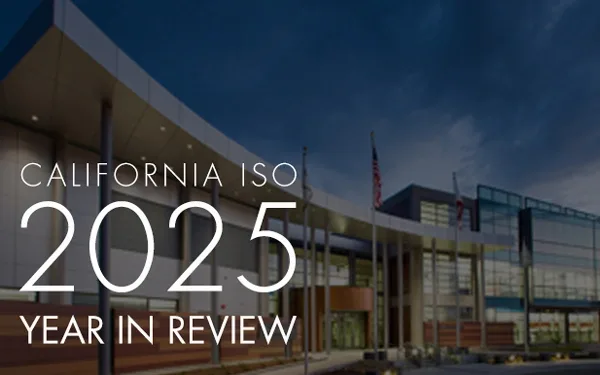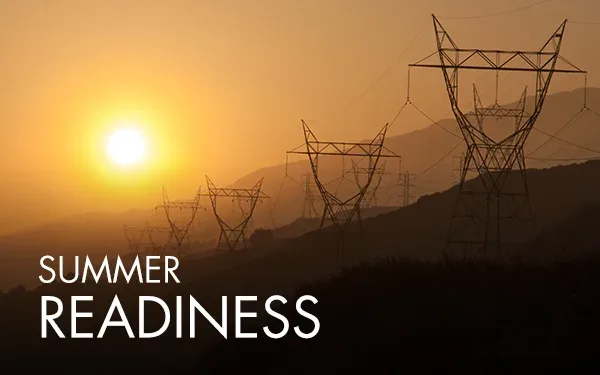An agreement regarding transmission and resource planning and implementation
Alice Reynolds, president of the California Public Utilities Commission; David Hochschild, chair of the California Energy Commission; and Elliot Mainzer, president and CEO of the California Independent System Operator, signed a Memorandum of Understanding in December entitled “Regarding Transmission and Resource Planning and Implementation.” In this Energy Matters blog post, they collaborate in explaining its importance.
As California transitions to a decarbonized electrical grid to reach carbon neutrality by 2045, nothing is more foundational to our success than maintaining reliability while promoting affordability and equity along the way.
In December, state agencies and the California Independent System Operator (ISO) came together and took a critical step toward achieving those carbon neutrality goals with the signing of a Memorandum of Understanding (MOU).
The new MOU between the California Public Utilities Commission (CPUC), California Energy Commission (CEC) and the ISO is straightforward and just four pages long. But it has important implications for the state’s clean-energy future.
Through improved coordination, the agreement tightens the linkage between transmission planning, generation planning, resource procurement, and the process used to connect new resources to the grid to support reliability and greenhouse gas reduction.
With so much new clean power being added to the system, close collaboration and proactive planning between the CPUC, CEC, and ISO are essential for maximum efficiency, reliability and the timely integration of new resources.
This enhanced emphasis on heightened coordination will make our processes for adding new resources more orderly and effective because the different roles our organizations play in California energy planning will be more closely aligned and synchronized.

While the Legislature and Governor set overall energy policy for the state, each of the MOU’s signatory entities has a distinct set of responsibilities in the planning and management needed to help carry out those policies.
The CEC forecasts demand, with those forecasts becoming the basis for transmission and resource planning. The CPUC develops forward-looking resource portfolios that inform procurement requirements for the load-serving entities the CPUC oversees. And the ISO conducts transmission planning that results in driving expansion of transmission infrastructure to enhance reliability and provide access to energy rich areas. The ISO also manages the resource interconnection process for new sources of energy wanting to connect to the grid.
In recent years, given the state’s ambitious decarbonization goals and the quantities of clean resources it will take to meet them, the ISO has been receiving hundreds of interconnection requests from potential resource developers that are not necessarily in areas considered optimal for additional transmission development. With the ISO’s interconnection application queue swamped with applications, including many that aren’t feasible in the desired timeframe, it has become extraordinarily difficult for a timely review and analysis of them all.
Moreover, under the MOU, the ISO is committed to a much more proactive approach to transmission planning, one where its forward-looking transmission planning process helps shape and inform the interconnection queue and procurement activities of the state’s load-serving entities.

Instead of reacting to hundreds of interconnection requests that are not informed by a forward-looking power and transmission planning process, the MOU will enable us to be far more proactive and align queue requests and procurement with those areas of the state best suited for transmission development.
It is also important to more closely align the CEC’s long-term energy demand forecasts with the 10-year planning horizon used by the state’s regulated utilities in the CPUC’s procurement considerations. Simply put, to decarbonize the grid reliably and efficiently as called for by state policy, we need to do everything we can to onboard the right amounts of new resources in the right place at the right time.
The CEC was not a party to an earlier 2010 version of the MOU. Nor did that agreement capture the need for the three organizations to all consistently rely on the CEC’s comprehensive forecasting or incorporate its long-term resource research and planning efforts. Given how much the energy landscape has evolved since 2010, including the addition of record amounts of battery storage and increased transportation electrification and other developments, it became clear that including the CEC in the updated version of the MOU was essential.

As the MOU states, by establishing a new blueprint for closer alignment of our different roles, we will “enhance coordination of resource planning and transmission planning to achieve state reliability and policy needs and coordinate the timely development of resources, resource interconnections and the needed transmission infrastructure.”
The new agreement also specifies the timing and manner of information sharing between the three parties to ensure a common understanding of the state’s demand forecasts. That shared understanding would then be used on a consistent basis in transmission and resource procurement planning cycles for maximum efficiency.
As the agreement spells out, “The ISO will coordinate with the CEC and CPUC to manage the resource interconnections and network upgrade projects in the interconnection process and provide transparency to ensure timely interconnection, to the extent possible.”
The ISO has already taken a number of steps to streamline its interconnection process and this closer coordination will support the need for rapid deployment of ever greater numbers of clean-energy projects.
Transitioning California’s bulk power system requires us all to be pulling in the same direction. This new agreement clarifies and re-emphasizes our commitment to do everything in our power to make sure that happens.


